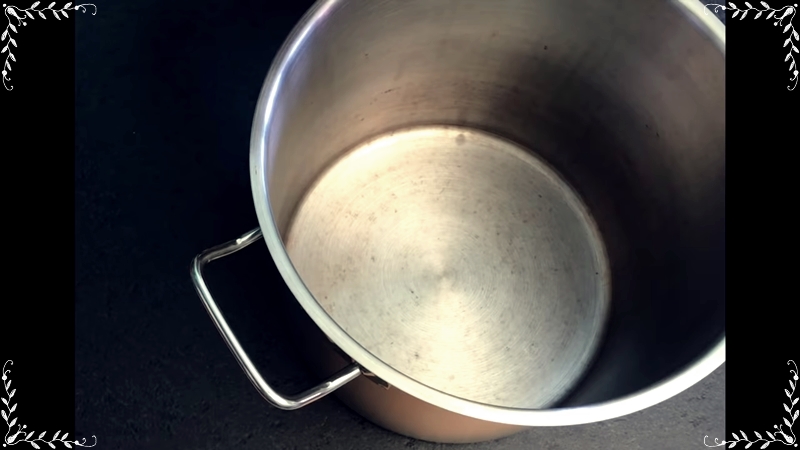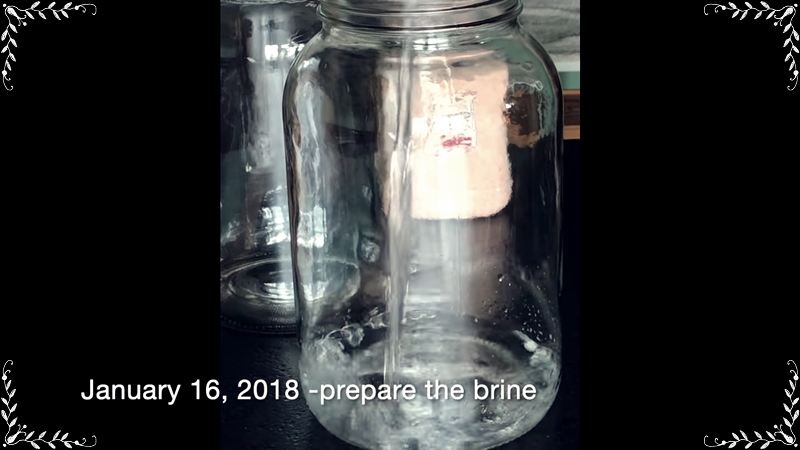សិប្បកម្ម កង សុសេដា ផលិតទឹកស៊ីអ៊ីវ តាមលំនាំទាំង ១៣ ដូចខាងក្រោមនេះ។ សិប្បកម្ម កង សុសេដា មានទទួល បោះដុំ លក់រាយ កាត់ស្តុក និងការចុះ MOU សម្រាប់លោកអ្នកមាន ស្នាកសញ្ញារបស់ អង្គភាព ឬ ក្រុមហ៊ុនលោកអ្នកផ្ទាល់ អបជាមួយ ស្លាកសញ្ញារបស់ សិប្បកម្ម កង សុសេដា ! ដោយសារ បើទោះជាលោកអ្នកចេះផលិតទឹកស៊ីអ៊ីវខ្លួនឯងក្តី ក៍ពិបាកក្នុងការ ទទួលបានស្តង់ដា មុន និង អំឡុងពេលបើកប្រតិបត្តិការអាជីវកម្ម !
ប្រវត្តិ ទឹកស៊ីអ៊ីវ(១)--ប្រវត្តិ ទឹកស៊ីអ៊ីវ(២)- ប្រវត្តិ ទឹកស៊ីអ៊ីវ(៣)
ទឹកស៊ីអ៊ីវ មានប្រើតាំងពីរជ្ជកាលអាណាចក្រ ហាន គឺមានអាយុប្រមាណជា ២,២០០ឆ្នាំកន្លងមក។ ទឹកស៊ីអ៊ីវ មានប្រើក្នុងប្រទេសចិន ជប៉ុន កូរ៉េ អាមេរិក អ៊ីរ៉ុប ភូមារ ថៃ វៀតណាម ឡាវ ម៉ាឡេ ឥណ្ឌូនេស៊ី....។ ភាសាដែលទាក់ទងពាក្យ ទឹកស៊ីអ៊ីវ រួមមាន៖
ទឹកស៊ីអ៊ីវ មានប្រើតាំងពីរជ្ជកាលអាណាចក្រ ហាន គឺមានអាយុប្រមាណជា ២,២០០ឆ្នាំកន្លងមក។ ទឹកស៊ីអ៊ីវ មានប្រើក្នុងប្រទេសចិន ជប៉ុន កូរ៉េ អាមេរិក អ៊ីរ៉ុប ភូមារ ថៃ វៀតណាម ឡាវ ម៉ាឡេ ឥណ្ឌូនេស៊ី....។ ភាសាដែលទាក់ទងពាក្យ ទឹកស៊ីអ៊ីវ រួមមាន៖

- ភាសាអគ្លេស (Soy Sauce)
- ភាសាខ្មែរ ទឹកស៊ីអ៊ីវ
- ភាសាចិន 酱油 ជៀង យ៉ូ
- ភាសាចិនកង់តុង តៃវ៉ាន់ 豉油 ឈី អ៊ៀវ Chǐ yóu
- ភាសាភូមារ ပဲငံပြာရည်
- ភាសាវៀតណាម xì dầu or nước tương ស៊ី ហ្សូ ឬ នឿក ឌឿង
- ភាសាថៃ ซีอิ๊ว (Si Iw ស៊ីអ៊ីវ)
- ភាសាជប៉ុន しょうゆ ជ យឺត
- ភាសាម៉ាឡេ kicap
- ភាសាហ្វីលីពីន toyo
China
Soy sauce (酱油) is considered almost as old as soy paste — a type of fermented paste (Jiang, 酱) obtained from soybeans — which had appeared in Western Han dynasty and was listed in the bamboo slips found in the archaeological site Mawangdui.[6][5] There are several precursors of soy sauce that are associated products with soy paste. Among them the earliest one is Qing Jiang (清酱) that had appeared in AD 40 and was listed in Si Min Yue Ling (四民月令).[7] Others are Jiang Qing (酱清), Chi Zhi (豉汁) and Chi Qing (豉清) which are recorded in Qi Min Yao Shu (齐民要术) in AD 540.[7] By the time of Song dynasty, the term soy sauce (酱油) had become the accepted name for the liquid condiment,[7] which are documented in two books: Shan Jia Qing Gong (山家清供)[9] and Pu Jiang Wu Shi Zhong Kui Lu (浦江吴氏中馈录)[10] in Song dynasty.
សហគ្រាស កង សុសេដា (Kang Soseda) សញ្ញាស្រី្តកាន់ស្ពៃ
- Soy sauce is a good source of vitamin B3. It is also a good source of certain minerals, including iron, phosphorous, and manganese. It also has free amino acids. Tamari is a source of free amino acids and vitamin B2. Due to their vitamins and amino acids, soy sauce and tamari do confer some nutritional benefit. One concern is that there may be too much sodium in this food. In truth, you consume less sodium when you use soy sauce because the flavor is more penetrating. Reduced-sodium soy sauces have curbed the sodium in soy sauce even further.
ទឹកស៊ីអ៊ីវ មានបង្កប់នូវវីតាមីន បេ ៣។ ទឹកស៊ីអ៊ីវមានជាតិរ៉ៃ មានជាតិដែក ជាតិហ្វរហ្វូរូស និងជាតិ ម៉ាញ៉េស្យួម។ ទឹកស៊ីអ៊ីវមានសារធាតិ អាស៊ីត អាម៉េណូ។ ក្នុងទឹកស៊ីអ៊ីវ មានធាតុ តាមារី គឺមានន័យថាគ្មាន ធាតុអាស៊ីតអាមីណូ និងគ្មានវិតាមីន បេ ២។ ដោយសារគ្មាន ធាតុ វីតាមីន គ្មានធាតុអាស៊ីត អាមីណូ ដូច្នេះ ទឹកស៊ីអ៊ីវ និង តាមារី មានសារធាតុមានប្រយោជន៍សម្រាប់ជាអាហាររូបត្ថម្ភ។មានការភ័យខ្លាចថា ទឹកស៊ីអ៊ីវសំបូរខ្លាំងពេកនូវធាតុសូដ្យូមសម្រាប់ចំណីអាហារ. តាមការពិតទៅ ពេលណាលោកអ្នកទទួលទាន ឬ ប្រើ ទឹកស៊ីអ៊ីវ គឺមានន័យថា ធាតុ សូដ្យូមវាថយចុះទៅវិញទេ ព្រោះថាការកាត់បន្ថយសូដ្យូមក្នុង ទឹកស៊ីអ៊ីវ វាកាន់តែបង្កើនធាតុសូដ្យូមក្នុងទឹកស៊ីអ៊ីវឡើងថែមទៀត។ (ទឹកស៊ីអ៊ីវសំបូរសូដ្យូម/ជាតិអំបិល កាលណាអំបិលខ្ពស់ ធ្វើឲ្យមានសម្ពាធឈាមខ្ពស់ដែរ តែ ទឹកស៊ីអ៊ីវ មិនប្រៃ ដូចជា ទឹកអំបិល ឬ អំបិលគ្រួស ១ គ្រាប់ ឬ ទឹកត្រីឡើយ! )
- A Source of Sodium: A 1-teaspoon serving of soy sauce, also known as tamari, has 335 milligrams of sodium, according to the USDA National Nutrient Database. While sodium is an essential mineral, required for basic bodily functions, including nerve transmission and regulating your blood pressure, the recommended upper limit of sodium for adults is 2,300 milligrams per day. It drops to 1,500 milligrams per day for those who have a history of cardiovascular disease, are African American or who are 51 or older
បើយើងតាមទិន្ធន័យរបស់ USDA National Nutrient Database គេរកឃើញថា ទឹកអ៊ីវ គឺជាប្រភពនៃ សូដ្រូម/អំបិល Salt. គ្រាដែល សូដ្យូម គឺជាធាតុសំខាន់សម្រាប់ ជាតុរ៉ៃ ដែលជាធាតុសំខាន់ចាំបាច់ ទ្រទ្រង់រាងកាយ និងបំលែង ព្រមទាំងសម្រួលសម្ពាធឈាម គេផ្តតល់ជា អនុសាសន៍ថា មនុស្សវ័យជំទង់ គួរតែទទួលទាន ជាតុអំបិល/សូដ្រូមក្រោម ២,៣០០ មីលីក្រាម/ថ្ងៃ។ បើអ្នកមានជំងឺបេះដូង គឺតែបន្ថយមកត្រឹមតែ ១,៥០០ មីលីក្រាម/ថ្ងៃ ការនេះក៍ដូចគ្នាដែរសម្រាប់មនុស្សវ័យចំណាស់ អាយុ ៥១ ឆ្នាំ និង មនុស្សមានកំណើតមកពី អាហ្រិក-អាមេរិកាំង។
- Anti-Allergenic Properties: A 2005 review in the “Journal of Bioscience and Bioengineering” found that soy sauce had anti-allergenic properties. In an cell-line study, shoyu polysaccharides, produced during the fermentation process required to make soy sauce, demonstrated potent anti-allergic abilities. In a human study, participants who ingested soy sauce and had allergies exhibited more improvement than those taking the placebo. The scientists concluded that soy sauce held great promise in treating allergies, although further study was needed.
- Antioxidant Properties: In 2005, the “Journal of Bisoscience and Bioengineering” published a review of several studies conducted on soy sauce and found that it was very high in shoyuflavones, a natural antioxidant. Natural antioxidants protect your body from damage from free radicals, which your body makes naturally as it digests food. Free radicals can speed up the aging process, as well as potentially increasing your risk of developing heart disease or cancer. The author of the review concluded that the antioxidants in soy sauce helped reduce the effects of inflammation, as well as improved overall gastric acid production, thus helping with digestion. Additionally, the antimicrobial properties of soy sauce were found to be effective in protecting the body from certain bacteria.
០៤ប្រភេទទឹកស៊ីអ៊ីវ
ទឹកស៊ីអ៊ីវ៖ មានច្រើនរាប់រយប្រភេទ ដែលប្រភេទនីមួយៗខុសប្លែកគ្នាលើ ភ្រឿងផ្សំ វិធីសាស្រ្តនៃការផលិត តាមតំបន់ប្រទេស។ នៅសហរដ្ឋអាមេរិក គេឃើញមានរាប់រយប្រភេទ តែមាន ០៤ប្រភេទដែលគេពេញនិយមប្រើប្រាស់ ឃើញមានលក់តាមហាងគ្រឿងទេស ឬ តាមហាងម្ហូបអាហារ ដែលរួមមាន៖ (១) ទឹកស៊ីអ៊ីវព័ណ៍ស្រាល, (២) ទឹកស៊ីអ៊ីវព័ណ៍ខ្មៅ , (៣) ទឹកស៊ីអ៊ីវសូដ្យូមតិច និង (៤) ទឹកស៊ីអ៊ីវ តាម៉ារី។
Soy Sauce Varieties:There are literally hundreds of soy sauce varieties. Varieties depend on the ingredients used, the method used to create the sauce, and the region in which it is made. In the United States, there are a few main varieties that may be encountered in grocery stores or recipes: light, dark, low sodium, and tamari.
Light Soy Sauce – This thin, brown liquid is what most Americans refer to as regular soy sauce. It is a good all-purpose seasoning and condiment. ទឹកស៊ីអ៊ីវ មានព័ណ៍ត្នោតស្រាល គេច្រើននិយមហៅថា ទឹកស៊ីអ៊ីវធម្មតា។ ទឹកស៊ីអ៊ីវ នេះគេប្រើជាទូទៅ គ្រប់រដូវកាល មិនពាក់ព័ទ្ធ តមអាហារ។
Dark Soy Sauce – This type of soy sauce has had molasses or caramel added after the brewing process, which thickens the sauce slightly and produces a sweeter, more complex flavor. ទឹកស៊ីអ៊ីវព័ណ៍ខ្មៅ គេបញ្ចូលគ្រាប់ធញ្ញជាតិផ្សេងៗ ដូចជាស្រូវសាឡី ពោត...ដែលមានជាតិផ្អែមកាន់តែខ្លាំង និងមានរសជាតិចម្រុះ។
Low Sodium Soy Sauce – Salt is an important component in the production of soy sauce because it acts as an antimicrobial agent. Most low sodium soy sauces are made using the acid-hydrolyzed vegetable protein method, which does not utilize bacterial and fungal cultures and therefore requires less salt. ទឹកស៊ីអ៊ីវ សូដ្យូមតិចៈ ជាទូទៅ ក្នុងការផលិតគេប្រើអំបិលតិច ព្រោះអំបិលរារាំងដល់ការបង្ករមីក្រូ បាក់តេរី ដូច្នេះគេប្រើ មេ គឺអាស៊ីដ ហាយដ្រូឡាយចម្រាញ់ចេញពីបន្លែដើម្បីជួយក្នុងការរំលាយគ្រាប់សណ្តែកសៀង។
Tamari – This Japanese soy sauce is made with only soybeans and no wheat or other grains. Tamari has a very clean flavor and is favored by those who require a wheat or gluten free diet. ទឹកស៊ីអ៊ីវ តាម៉ារី ជាទឹកទឹកស៊ីអ៊ីវពិសេសសម្រាប់តែជនជាតិជប៉ុន ដែលមិនលាយទាល់តែសោះ នូវគ្រាប់ធញ្ញជាតិ ជាគ្រាប់ស្រូវសាឡី។ ទឹកស៊ីអ៊ីវតាម៉ារិន មានរសជាតិពិសេស សម្រាប់អ្នកស្ថិតក្នុង ការតបអាហារសាច់ដែលមានក្នុងពពួកគ្រាប់ធញ្ញជាតិ (gluten)។























































No comments:
Post a Comment